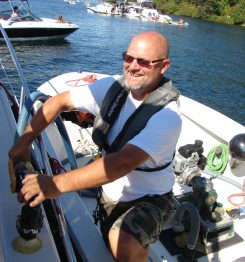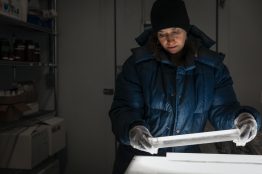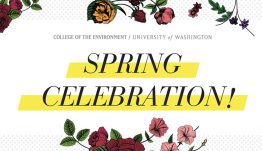In 2016, the Washington Clean Vessel Act, a joint project of Washington State Parks, U.S. Fish and Wildlife and Washington Sea Grant, helped divert a record 10 million gallons of raw sewage from Puget Sound, Lake Washington and other state waterways that previously would have been dumped into vulnerable waters. Instead it was collected for safe onshore treatment. This diversion is largely a result of training, outreach and federal funds provided by U.S.
Read more at UW Today »Earth's atmosphere more chemically reactive in cold climates
Unseen in the air around us are tiny molecules that drive the chemical cocktail of our atmosphere. As plants, animals, volcanoes, wildfires and human activities spew particles into the atmosphere, some of these molecules act as cleanup crews that remove that pollution. The main molecules responsible for breaking down all these emissions are called oxidants. The oxygen-containing molecules, mainly ozone and hydrogen-based detergents, react with pollutants and reactive greenhouse gases, such as methane.
Read more at UW Today »Ocean conservation needs a code of conduct, study finds
A diverse group of the world’s leading experts in marine conservation, including several scientists from the College of the Environment, is calling for a Hippocratic Oath for ocean conservation.
Read more at UW Today »May 17: Join us at Spring Celebration to honor 2016-2017 UW Environment award winners
Join us for ice cream sundaes as we bid farewell to the 2016-2017 academic year and honor this year’s College of the Environment award winners!
Read more »Shrubs, grasses planted through federal program crucial for sage grouse survival in Eastern Washington
The sage grouse is an exceptionally showy bird and an icon of the American West. But its sagebrush habitat is disappearing, and there is debate over how best to protect the populations in an increasingly developed landscape. A new study by University of Washington, state and federal researchers analyzed sage grouse in Eastern Washington and showed a surprisingly large benefit from a federal program that subsidizes farmers to plant year-round grasses and native shrubs instead of crops.
Read more at UW Today »





